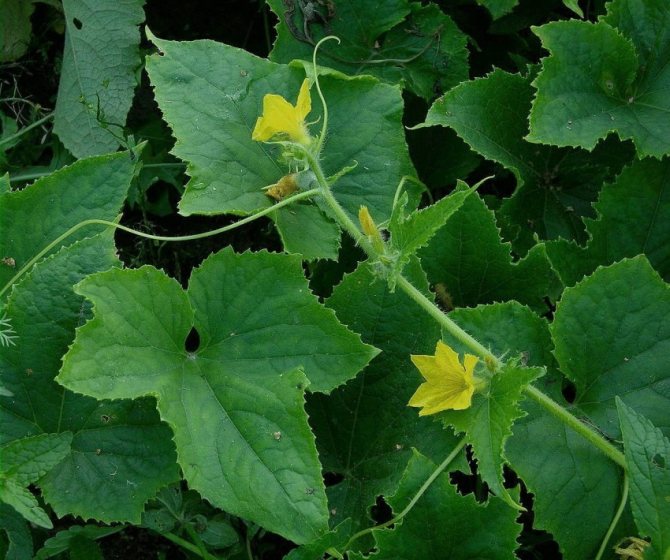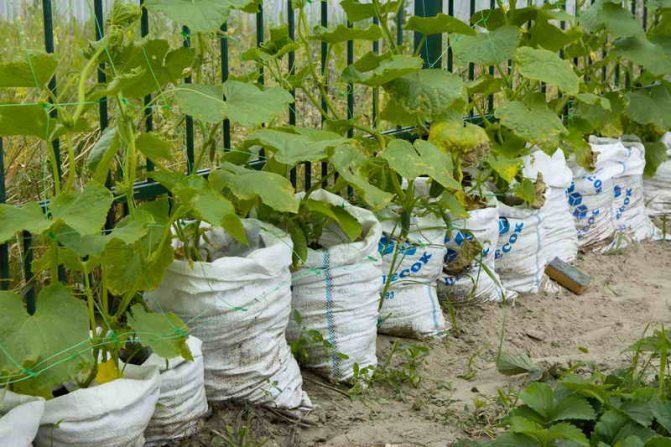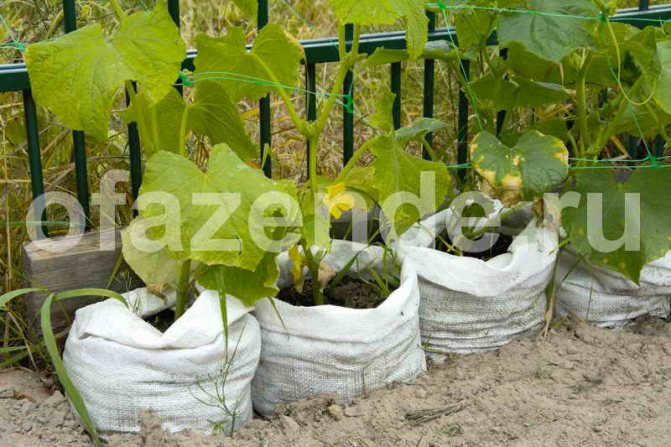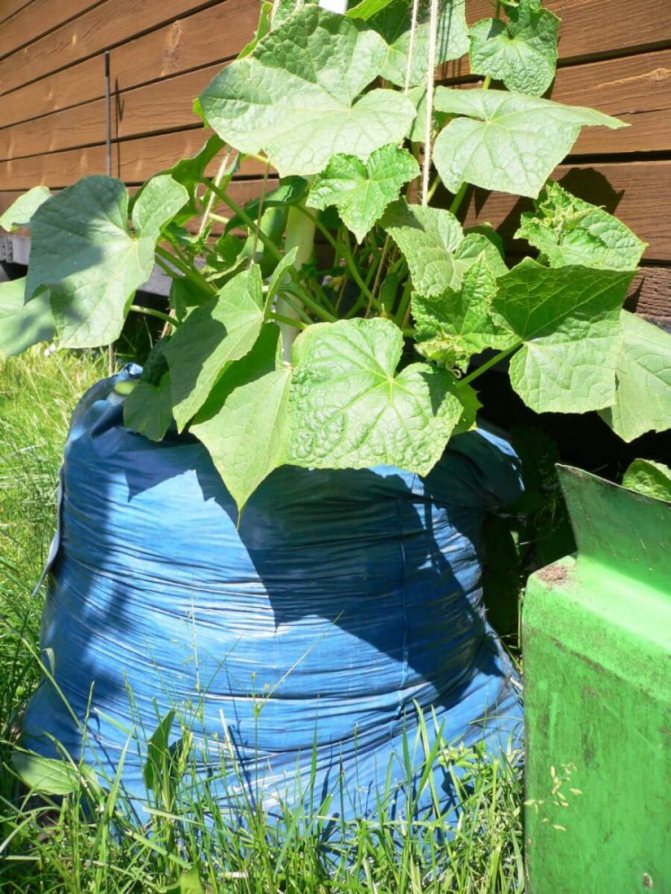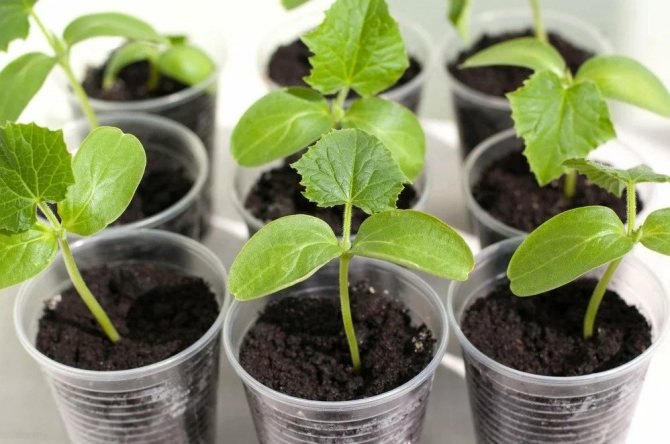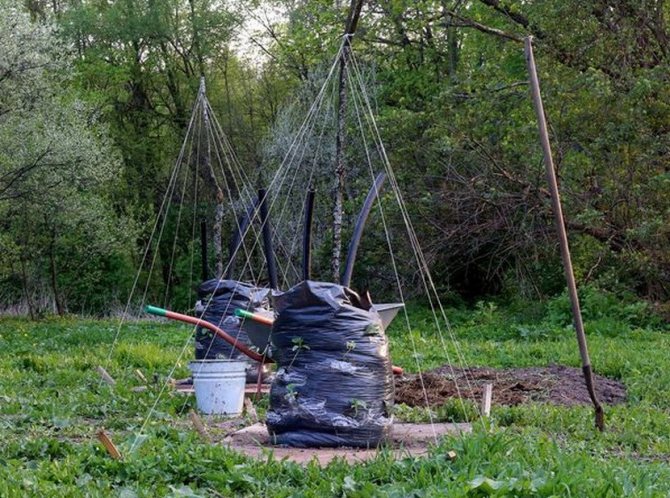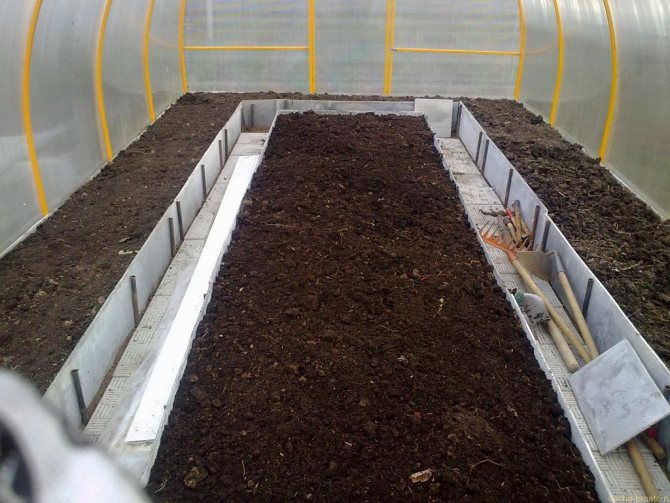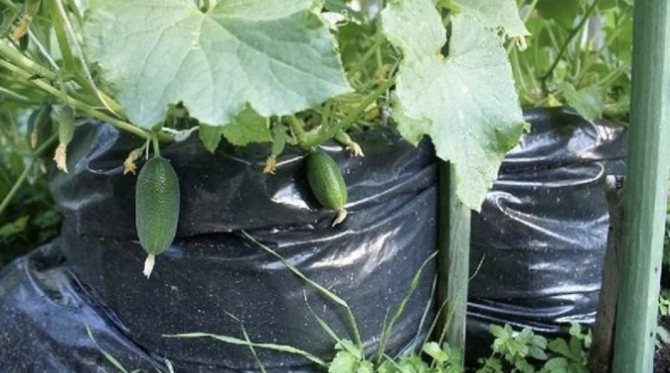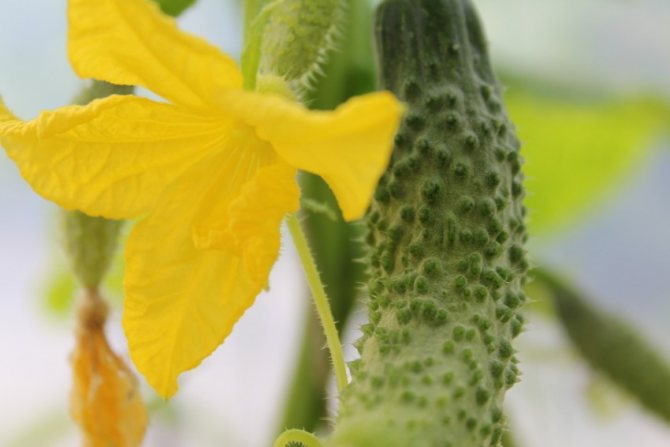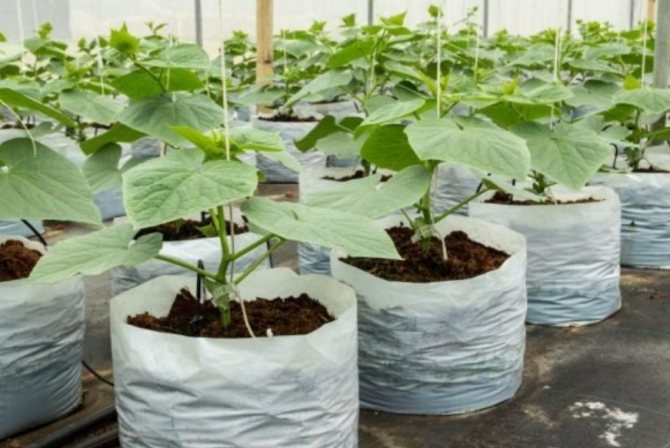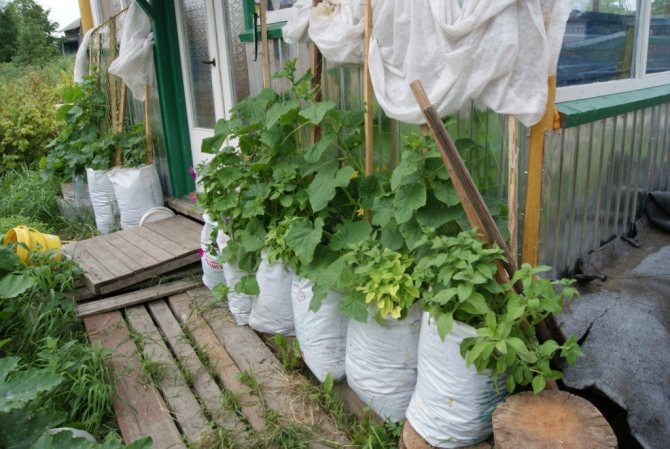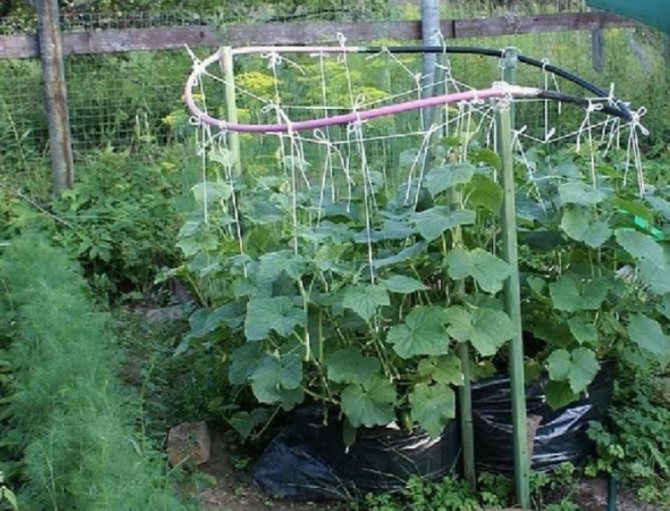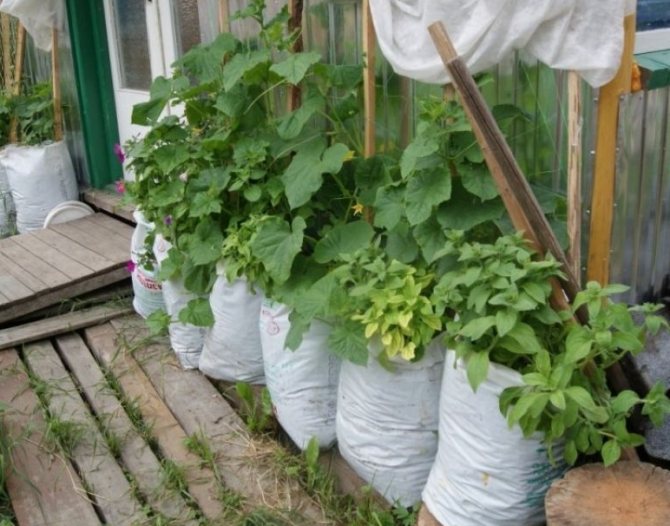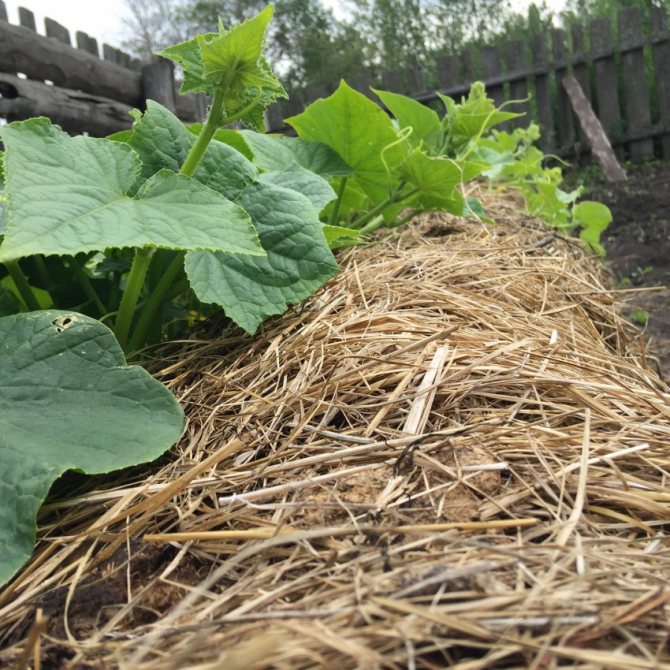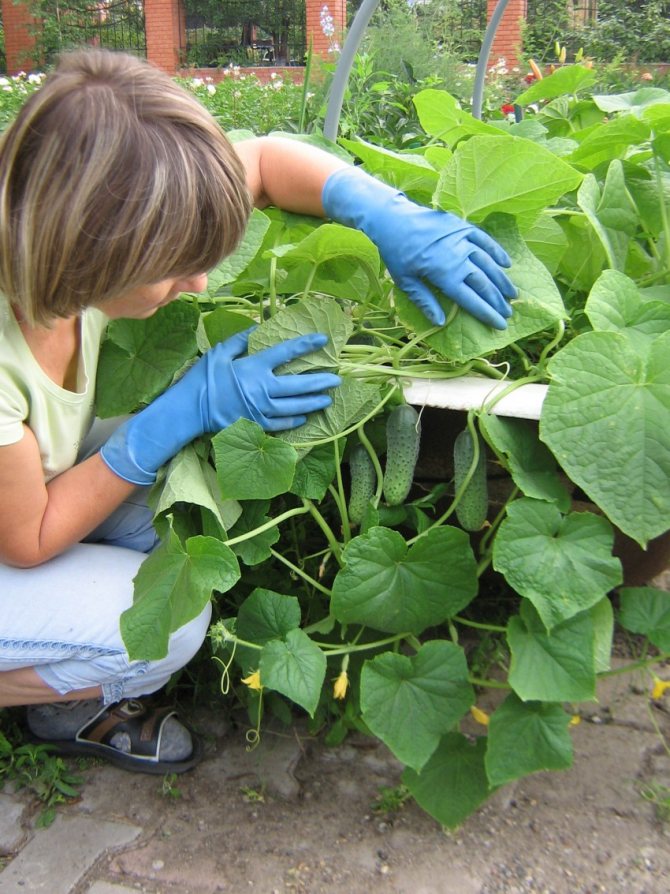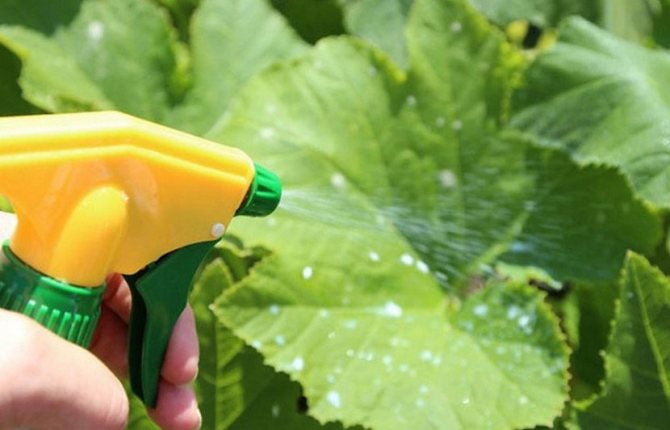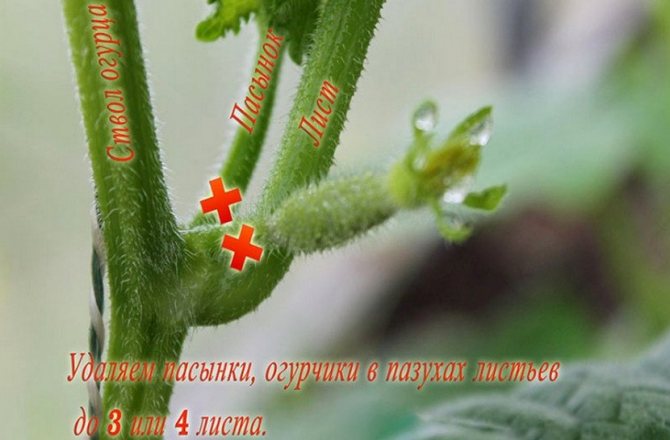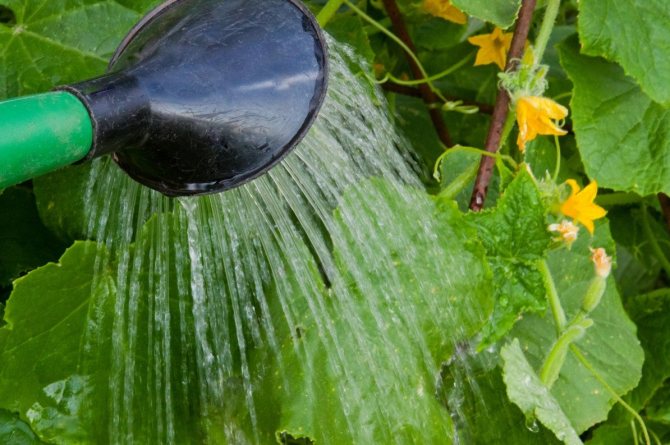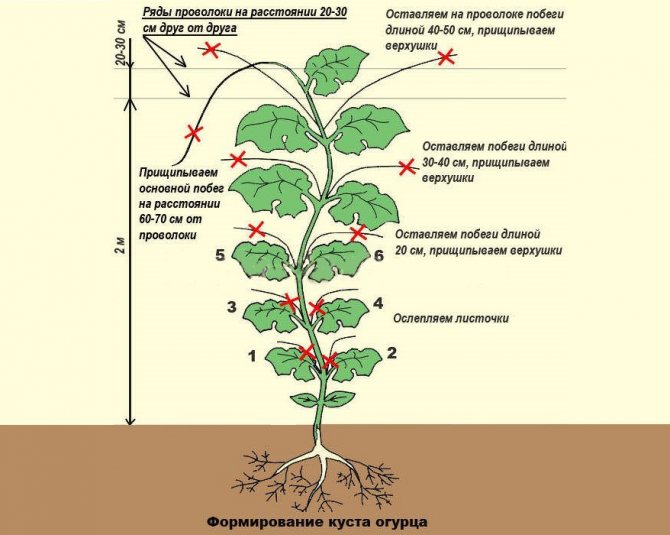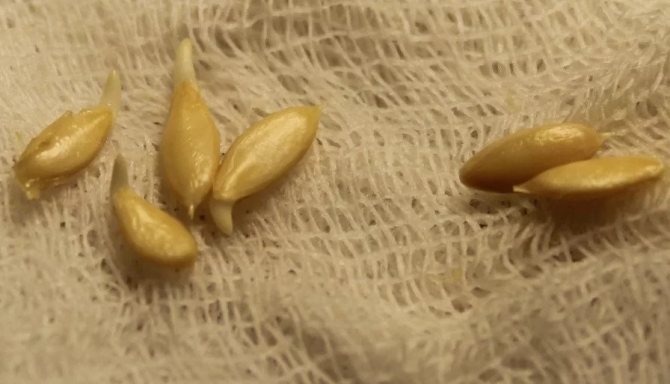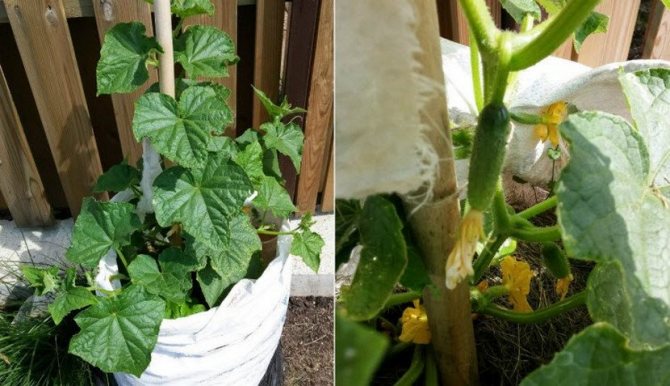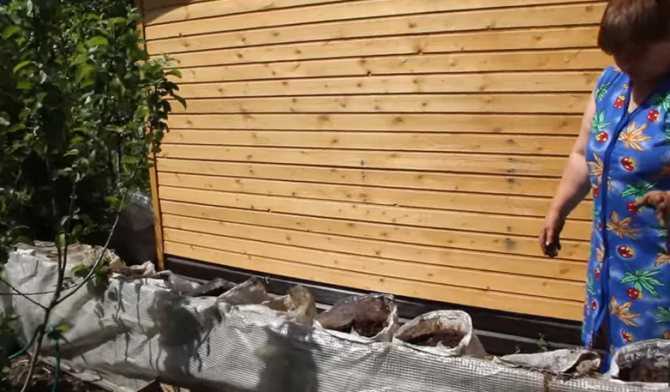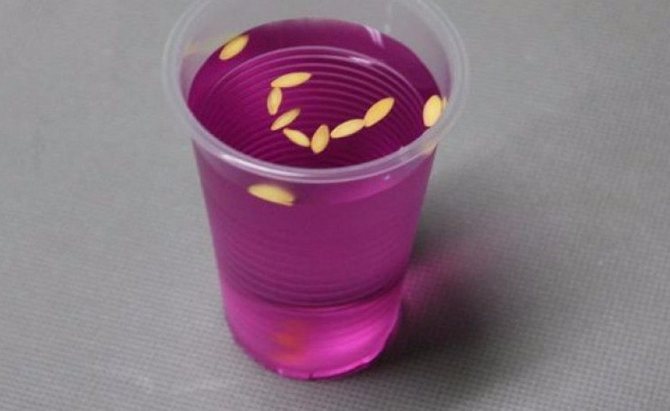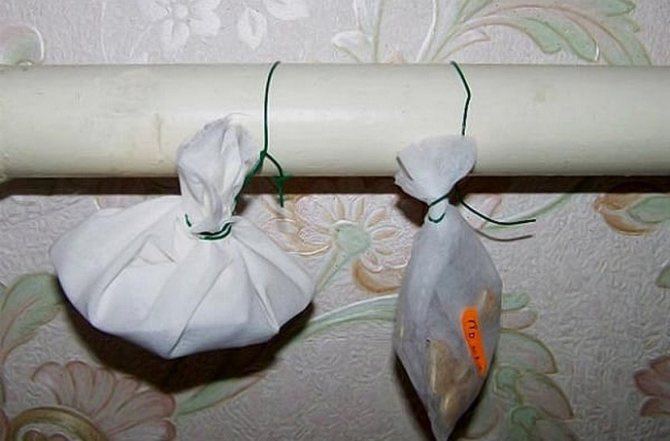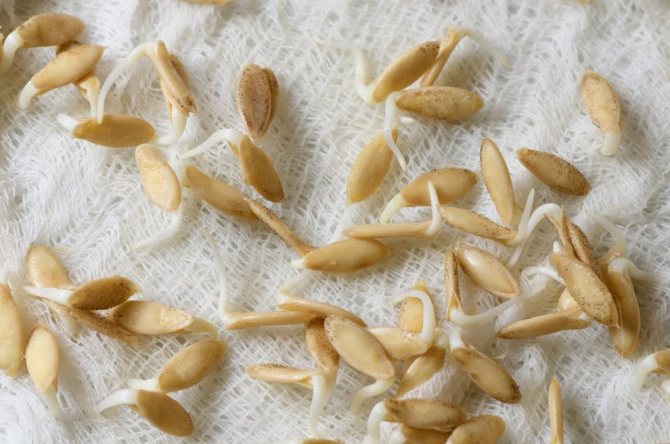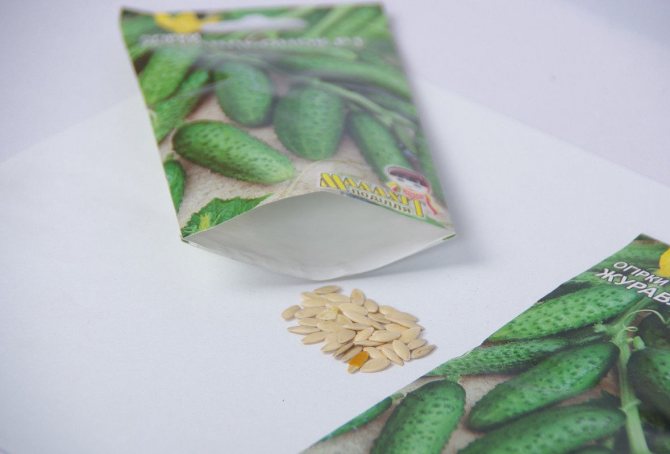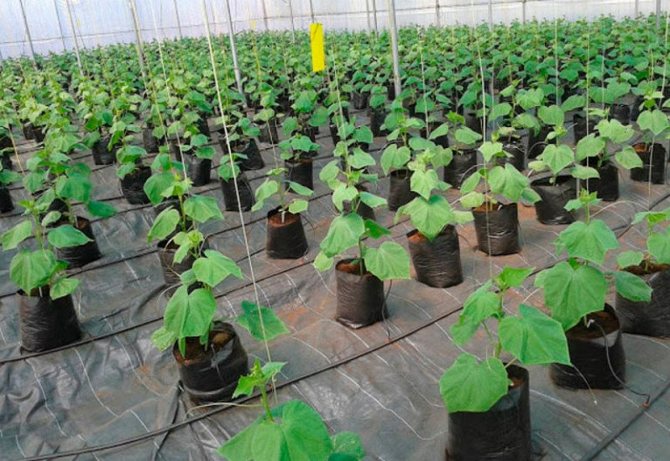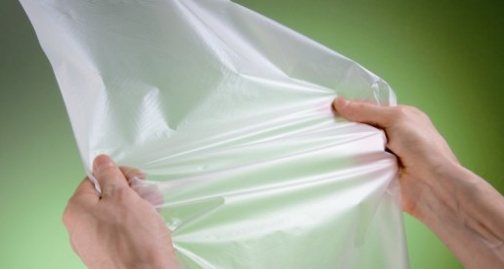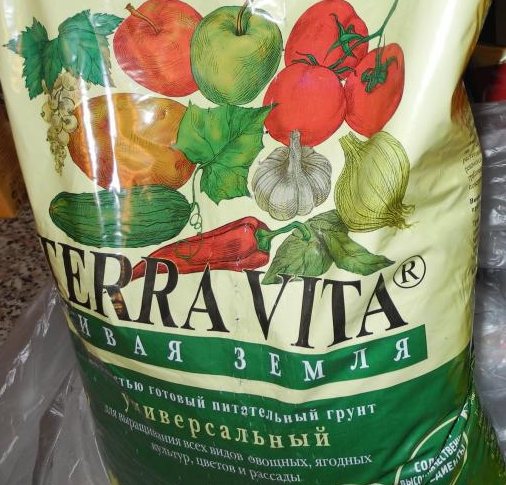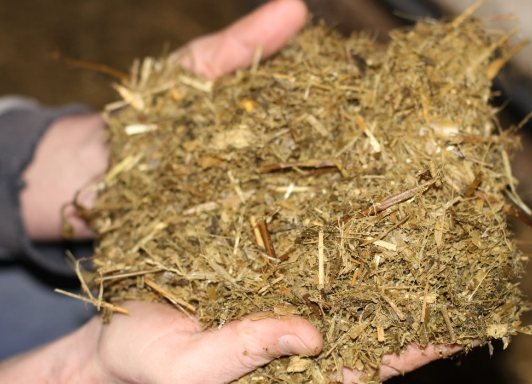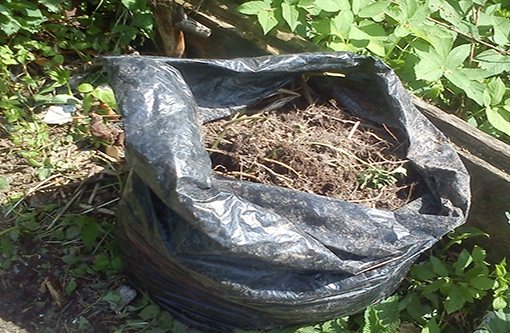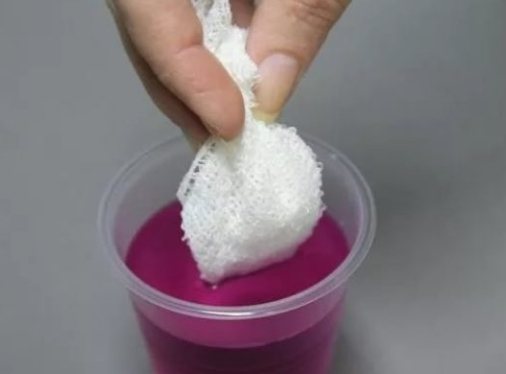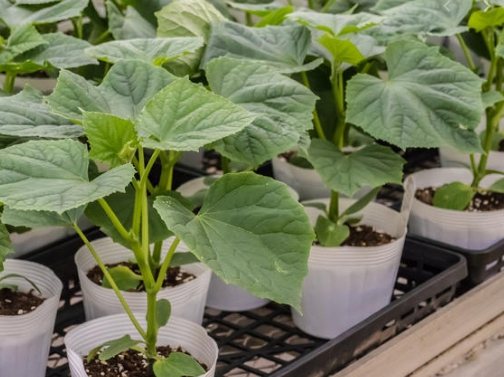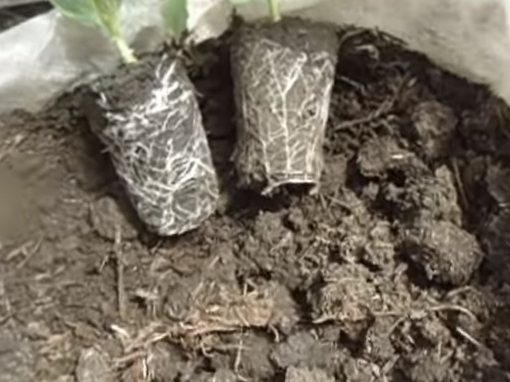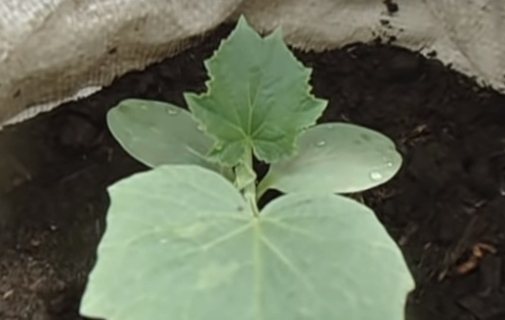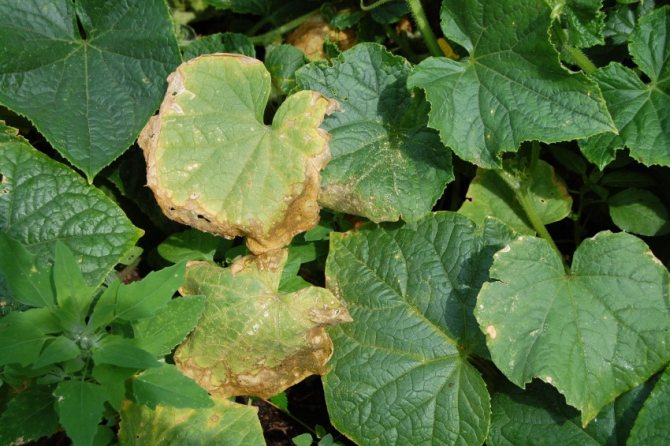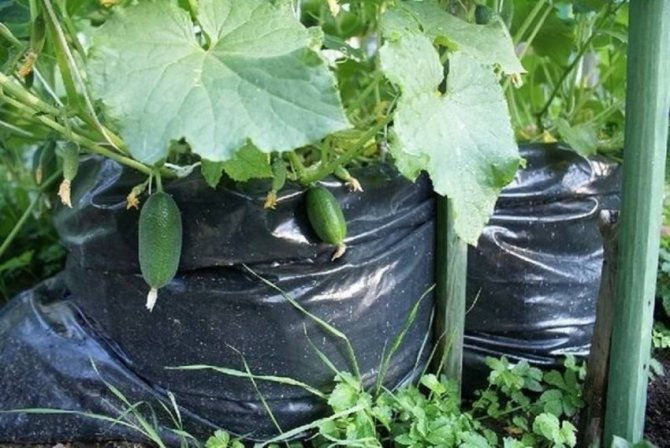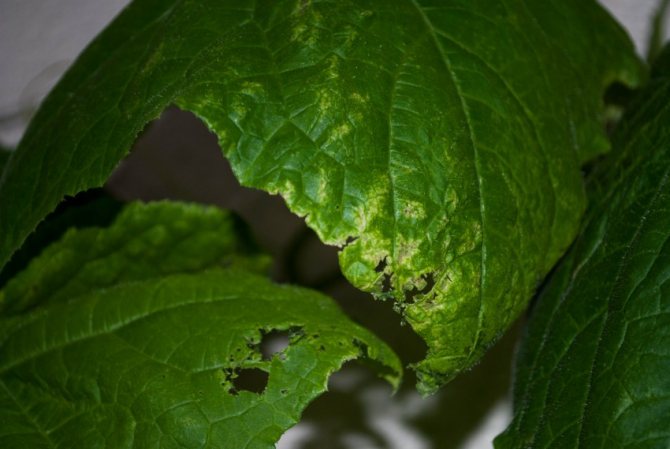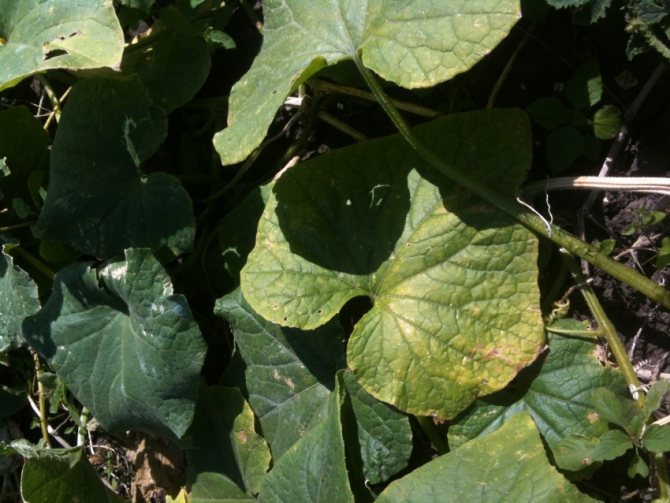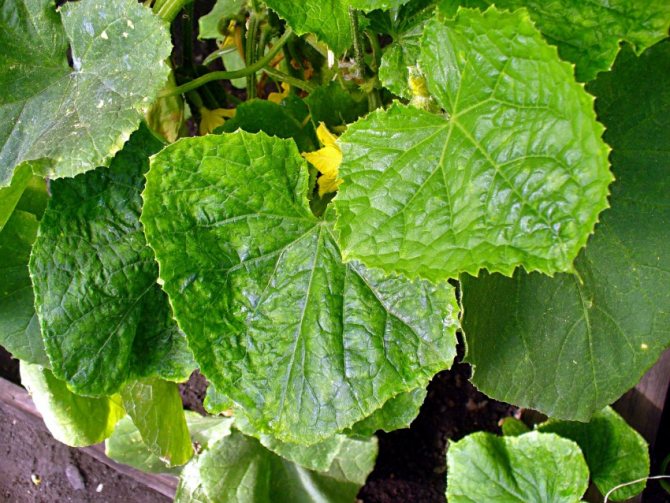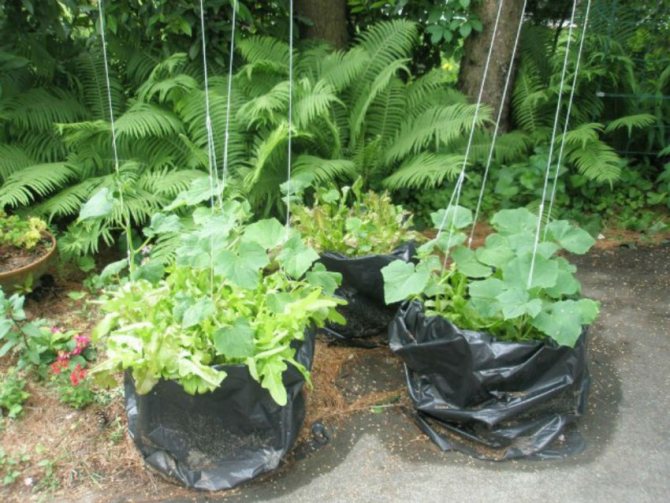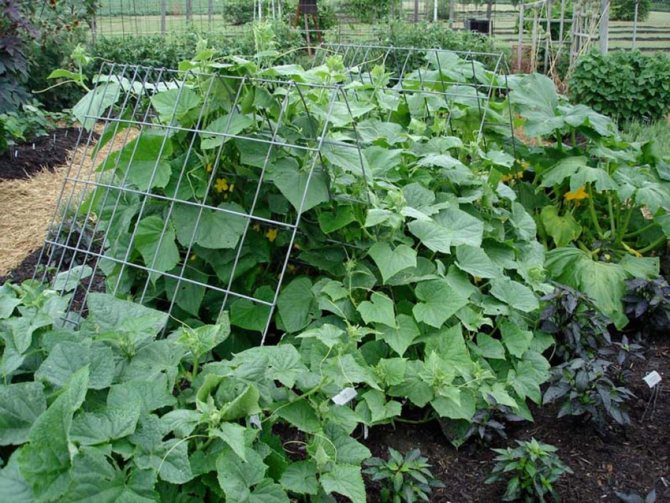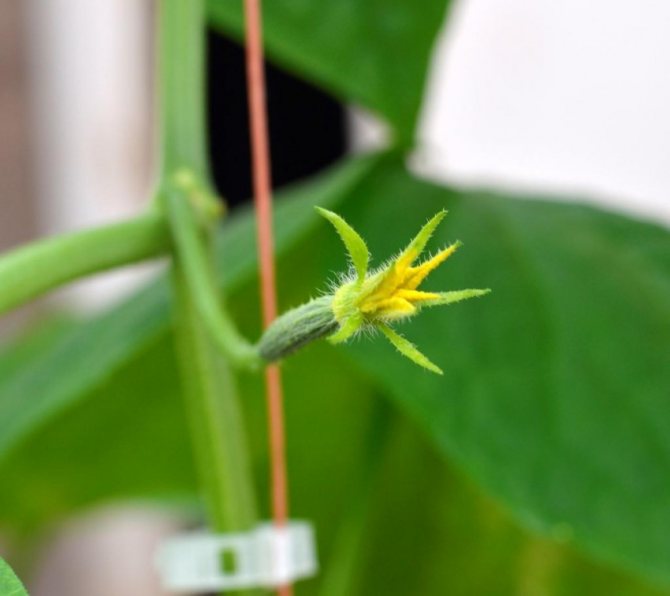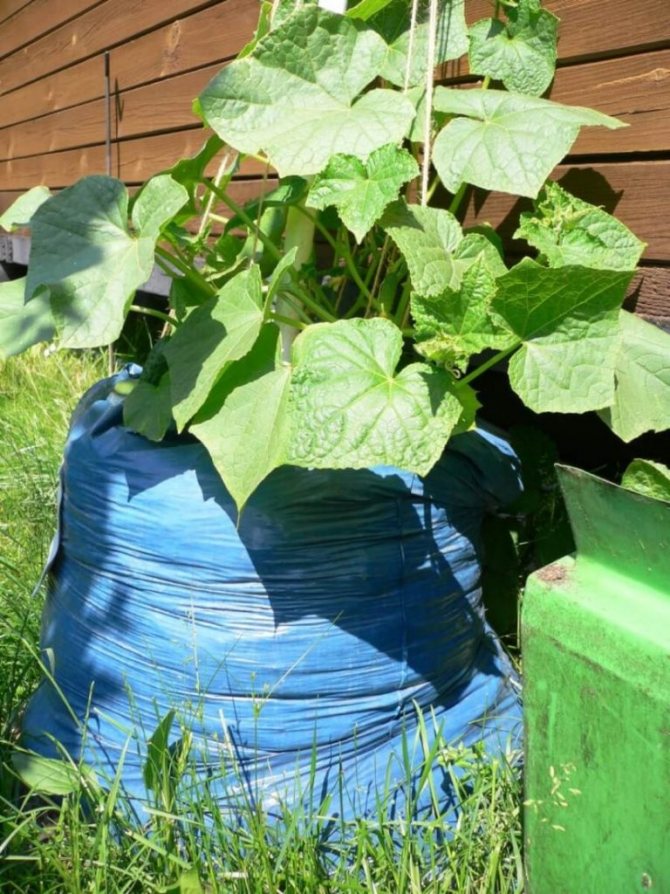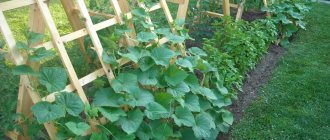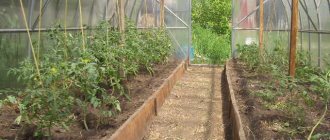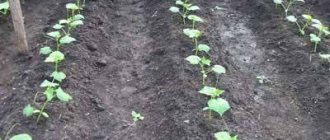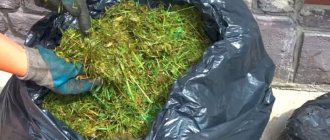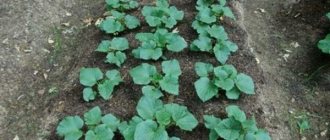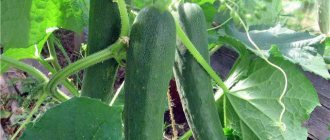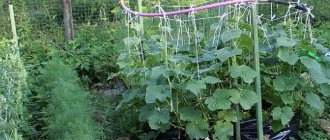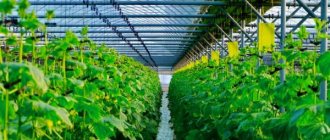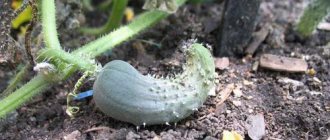Author rating
The author of the article
Yakov Pavlovich
Professor, Head of the Department of Vegetable Growing
Articles written
153
Not all summer residents have a large vegetable garden, so everyone's task is to fit as many vegetable or fruit crops as possible in a small area. The desire to save space gives rise to new ideas. This is how it became possible to grow cucumbers in a bag.
Cucumbers in bags - growing vegetables in an interesting and easy way
It is not necessary to have a summer cottage to be engaged in vegetable growing. It is quite successfully possible to grow cucumbers at home. For example, on the balcony or in the yard. To do this, use bags with slots. Fresh and lightly salted cucumbers obtained by this method will always be on the table.
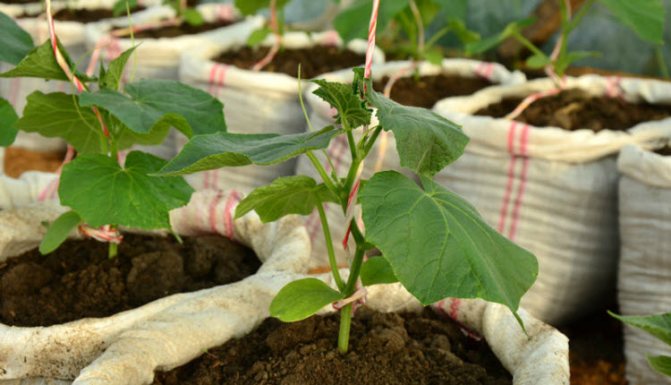
The main thing is to know some of the nuances and follow the instructions. The article will tell you how to grow cucumbers in bags with slots.
Harvesting and increasing the productivity of bushes
Harvesting of bagged cucumbers follows a general scenario for a specific plant variety... The only thing that can be hoped for is an earlier period of ripening of the first zelents, but only if the culture was provided with all the conditions for this. Young fruits should be harvested daily, avoiding overripe... Firstly, in this form, they will be tastier, and secondly, the bush will be able to form a new ovary and soon another good harvest will appear (the fruiting period can stretch over time).
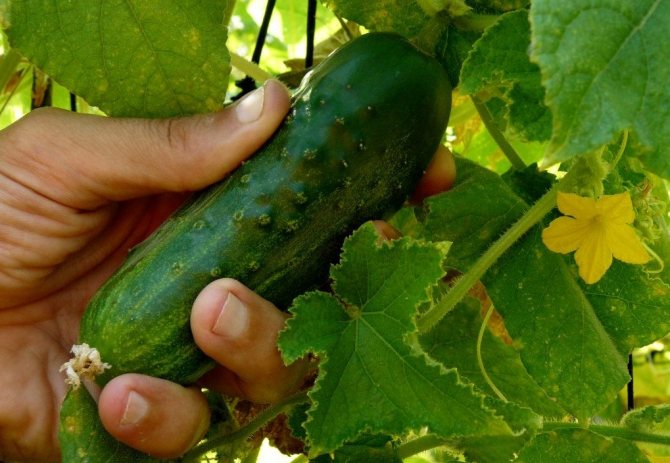

Perhaps in a photo or video, cucumbers in bags seem like a funny and ridiculous idea, but in practice, many gardeners have confirmed the success of using just this method of planting this crop. Moreover, there is no need to immediately plant hundreds of cucumber bushes, because in order to make sure that their cultivation is effective, it is enough to place 5-10 plants in bags, organizing full-fledged care of the "beds".
What are the advantages of the method of growing cucumbers in bags?
Such an interesting method as growing cucumbers in bags has a lot of advantages. However, he also has disadvantages. To understand whether it is worth trying to cultivate vegetables in a bag, it is important to know what the negative and positive aspects of this technology are.
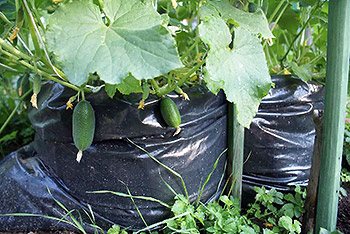

So, the main advantages include:
- The ability to save space. Some are cultivating cucumbers on the balcony.
- The need to form beds disappears.
- There is no need to weed the crop, deal with weeds.
- The root zone of the bush is not damaged by the bear. Root rot does not develop.
- The fruits ripen much earlier than when grown in a regular garden. About two weeks.
- Harvesting is very convenient.
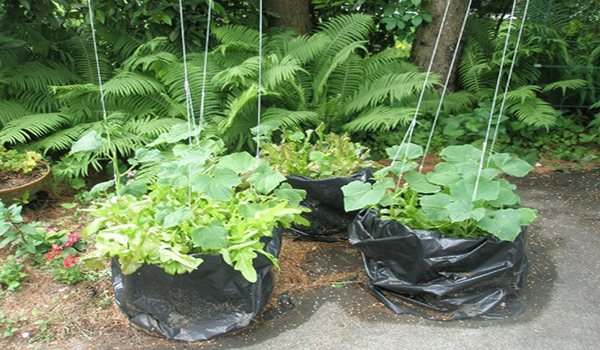

True, there are also negative reviews about growing cucumbers in bags at home. Among them it is worth highlighting the following:
- It is very difficult to maintain the optimum moisture content in the bags. And in waterlogged soil, the culture begins to rot and dies.
- It is also difficult to maintain the temperature. And ultra-high rates often lead to the destruction of the root system.
- The need for a number of preparatory work.
How to increase yields
With this method of cultivation, you can increase the yield.
- Bee-pollinated varieties that do not form ovaries well in cloudy weather are sprayed with special agents (for example, Ovary) or sweetened water. Such techniques attract pollinating insects.
- Varietal varieties with predominantly female inflorescences are grown with cucumber, which has more male flowers. This will improve the quality of pollination and have a beneficial effect on the harvest.
It is worth picking the fruits regularly, as it ripens. Better to do it daily. This will allow you to get the maximum amount of vegetables and extend the fruiting stage, because even one green plant left on the lash begins to slow down the development of new ovaries.
Preparation of materials for planting
If you plan to plant cucumbers in bags with soil in a greenhouse, preparatory work is required to begin at the beginning of May.


Until that time, you need to already purchase seeds of a certain variety and sow them in small containers for germination. It is also important to determine what the planting of a vegetable in bags will be: one or several young sprouts will be planted in one container.
To plant seedlings in a container, in order to get high-quality cucumbers in bags, it is necessary in late autumn. By the middle of summer, a cucumber tree usually grows, and the first fruits appear. Of course, a lot depends on the type of plant and compliance with the rules for caring for it.
Any bags are suitable for growing cucumbers. For example, trash, plastic. The main thing is that the container is sufficiently capacious and dense. The optimal size is from 70 to 120 liters. Polyethylene bags are highly durable and resistant to mechanical damage. Also, cucumbers are grown in sugar bags, in pickled bags. The latter are especially recommended for use. After all, their density is the highest, equal to 48-115 g / m2. They are made of braided polypropylene sleeve fabric.
There are different types of bags on sale:
- Plain white. Their density reaches 200 g / m2.
- Green or gray. These are recyclable products. They are significantly inferior in strength to white containers. However, they are quite suitable for growing cucumbers. Moreover, their cost is an order of magnitude lower than that of white bags.
Before growing cucumbers in garbage bags or from sugar, it is necessary to prepare a number of other devices in addition to the container itself. So, you need a two-meter-high wooden stick. A nail should be driven into its top. Ropes will be attached to it. You will also need 4 pieces of a hollow tube. For example, a hose. The length of each segment is 1 meter. Holes are drilled in each element in a checkerboard pattern. This is necessary for soil drainage. Wide tape will also come in handy.
Description of the procedure step by step
To create a vertical bed, in addition to the bag, you will need a 2-meter wooden stick with a nail driven in at the top - the ropes will be attached here, and 4 pieces of hoses or another hollow tube, about 1 m long. ... What is industrial cultivation in a greenhouse all year round is indicated in this article.
The video shows the cultivation of cucumbers in bags:
Garden bed preparation
Cucumbers are thermophilic plants, but they do not like direct sunlight. To grow them, it is advisable to find a shaded place. The bag can be placed directly on the ground, having previously dug a small depression - for stability. If you don't feel like messing around with weeding around vertical beds, you can place the bags on some kind of flooring - a sheet of old plywood, a chipboard door. Which self-pollinated greenhouse varieties are best used can be found here.
- A wooden pole is installed in the bag and filled with soil. Light soil is suitable for cucumbers. Chernozem, clayey soil and even peat are too heavy and caked in a bag.They fill up the earth in layers: it is better to lay dry leaves on the bottom, then rotted manure, and then light soil - forest, for example, or purchased. Manure and soil layers alternate. On average, 5 layers are obtained in a bag 1 m high.
- During the filling of soil at a distance of 10 cm from the pole, 4 pieces of hose with holes are inserted.
- The last 15–20 cm are not filled, but tucked up, forming a side.
- Ropes or fishing line are attached to the nail at the top of the pole and fixed on the ground so that a kind of "hut" is obtained.
The video shows the cultivation of cucumbers in sugar bags:
Seed preparation
You can plant both seeds and seedlings. 2-3 year olds are most suitable as seed material: they produce more female flowers. If the seeds are last year's, then it is advisable to warm them up before planting for about 2 hours at a temperature of 50-65 C. What the Masha f1 variety looks like is indicated in this article.
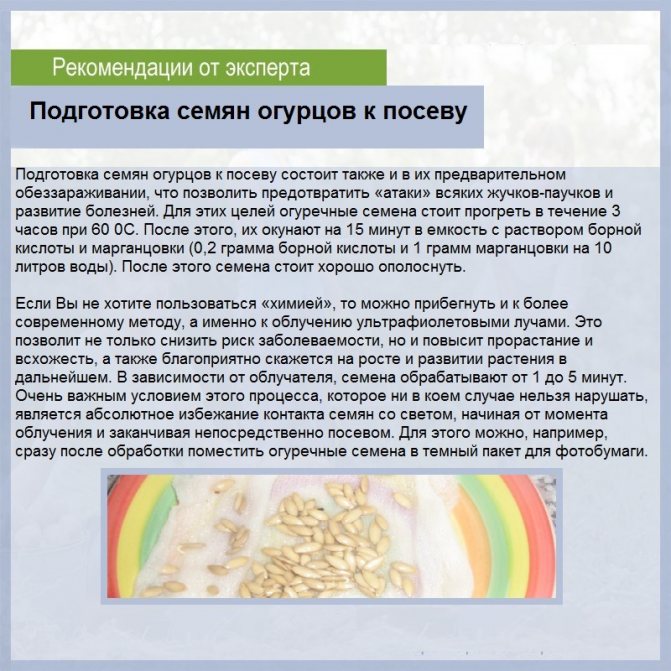

- The seeds are soaked in warm water. Pop-ups are immediately removed - they are empty.
- The material must be hardened. To do this, the seeds are left in warm water for a day, and then the container with them is placed in the refrigerator for 3 days.
- The seeds are germinated and planted in a vertical bed.
- If you want to receive fresh cucumbers until late autumn, plants of different sizes are planted in one bag - early ripening, mid and late ripening. If seedlings are used, then only strong seedlings with three true leaves are suitable for planting.
- Sowing at the end of May. After planting, the garden bed is watered abundantly.
The video shows the cultivation of cucumbers in bags with slots:
Cucumber care
For a good harvest, proper watering and feeding are necessary. Water and feed are supplied through hollow tubes. What is the best seed for a greenhouse to use is indicated in this material.
- Watered "bag" cucumbers less often than planted in the ground - about 1 time in 3 days. Polyethylene holds water perfectly, and the vertical bed practically does not lose it.
- Check moisture by immersing your finger in the ground. If you use a transparent bag, the condition of the soil is visible through the film.
- Water for irrigation should be warm - about 23-25 C.
If the irrigation through the tubes is not enough - there are too many seedlings or the harvest is plentiful, then the roots of the cucumbers will begin to sprout through the slots. In this case, the bag must be reinstalled on the pallet, and water must be poured into the last so that the plant can receive additional moisture. How to grow the variety Herman f1 can be found in this article.
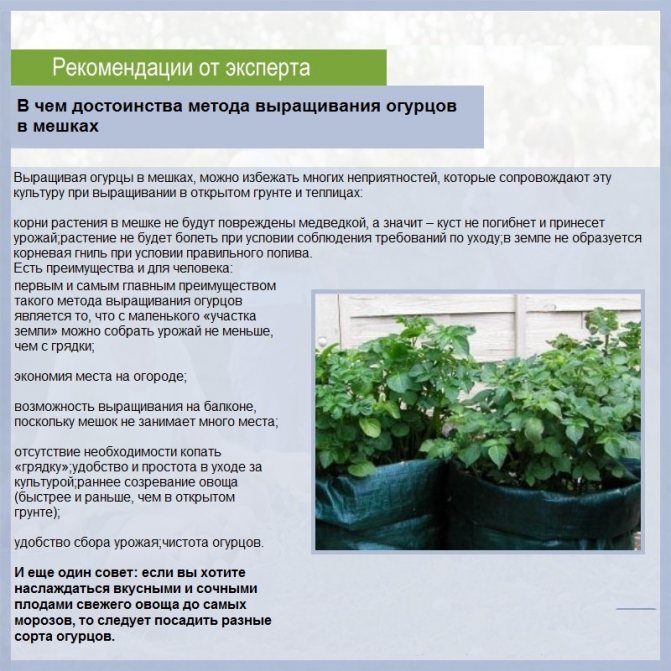

Top dressing is carried out up to 5 times during the growth period, and then once every 2 weeks. The solution is poured through the tubes, just like water... The composition of the feeding depends on the period. When to plant cucumbers in a polycarbonate greenhouse, you can find out from this link.
- For seedlings, a solution of a mixture of superphosphate, ammonium nitrate and cow dung is used. You can use special fertilizers that do not include nitrate nitrogen.
- During growth and flowering, the proportion of cow droppings decreases, and potassium sulfate is added to the mixture in addition to superphosphate.
Cucumbers need phosphorus constantly, but in small doses. Its deficiency affects the development of the root system and green mass, which ultimately leads to poor fruiting. Excess causes the leaf to fall off. Learn how to grow a good harvest of cucumbers here.
- When fruits appear, potassium, magnesium and nitrogen should be included in the top dressing. Potash nitrate is usually the source of the elements.
- Growing cucumbers should be tied up. The first garter is carried out when 5–6 leaves are formed on the sprouts. For this, the ropes were attached to the pole. Each plant should have its own mating.
Cucumbers, if planted late-ripening, can bear fruit until October. Plant roots are reliably protected, so they are not afraid of even the first frosts.
What is the essence of the method, what are the conditions for growing cucumbers in a bag?
Then the leaves will not suffer from the scorching sun.To make the bed more stable, they dig a shallow hole under the bag. Then they take a container and fill it with half-fertile soil.
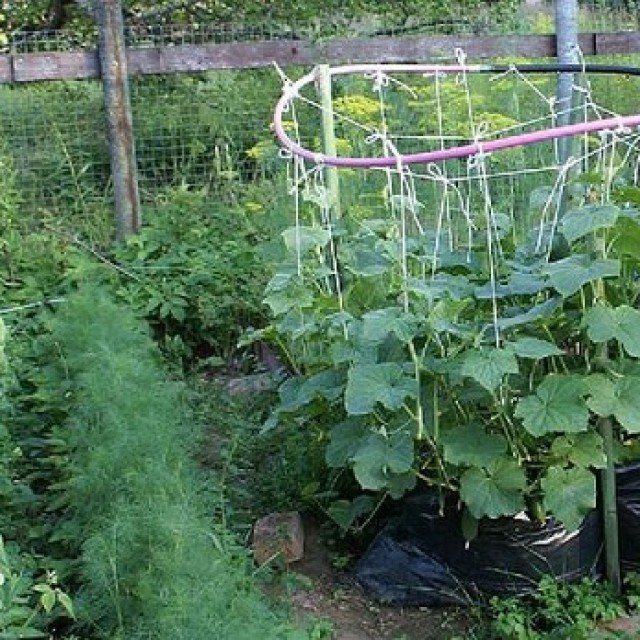

It is advisable to prepare a mixture of peat, humus, manure and earth. Or buy ready-made soil in the store. To prevent the bag from tearing, it is wrapped with tape.
Next, a wooden stick is driven in the center. This is a kind of support. The whips of the plant will rise along it. Tubes are placed at a distance of 10 centimeters. After that, the container is covered with earth almost to the top. The edge of the bag is wrapped, forming a low side. The garden is ready. Next, the cucumbers are planted in polyethylene or sugar bags.
Several seeds are usually placed in one bag. They hatch much faster than in a regular garden bed. You can also use the seedling method. After planting, irrigation is carried out. Pour through plastic tubes. In the future, irrigate once every few days.
When 5-6 leaves appear on the sprout, they tie it to the central trellis. If the summer resident wants to enjoy delicious cucumbers for a longer period, then it is recommended to plant vegetables of different ripening periods.
Preparing the seeds
To achieve a good harvest, the seeds should be prepared appropriately before planting. This is done in a few steps:
- The seeds are carefully selected.
- Warming up in progress.
- Next, the seed is processed.
- The final stage is hardening.
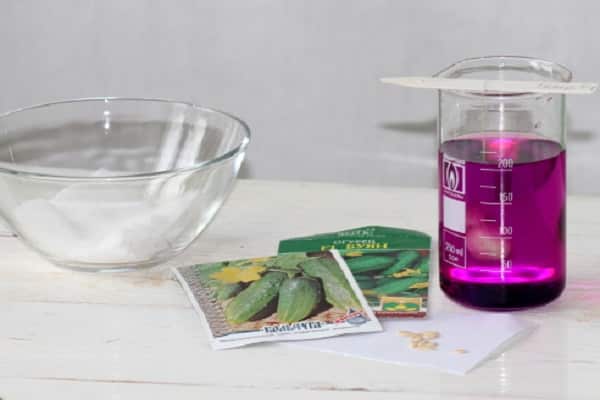

It is very important to choose the best from the whole abundance of seeds, not empty and most importantly large... To do this, soak them in liquid (warm) for 5 minutes. After that, you need to transfer them to a previously prepared saline solution (50 grams per liter). Then you should wait, some seeds will float up, they should be thrown away.
See also
The best varieties of cucumbers for open ground in the middle lane and the timing of their plantingRead
Next, you need to thoroughly dry the material for sowing, and for this you need to lay them out on a cloth and put, for example, in the sun, or, simply, put them on a saucer and place them on a warm battery. Further, the seeds must be disinfected so that in the future the plants are not exposed to fungal diseases and all sorts of pests. To achieve this, you need to warm them up for some time at a temperature of 60 degrees Celsius.
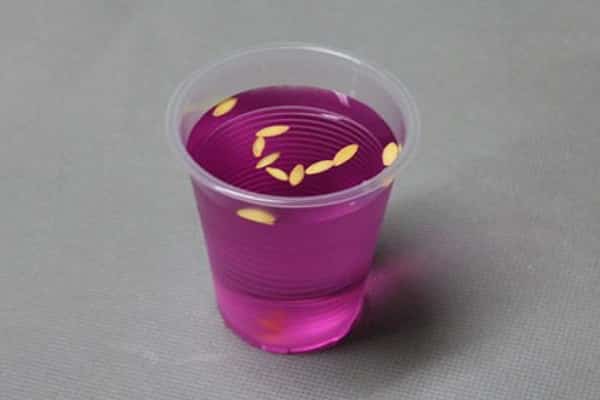

This approach will significantly increase yields. After all these procedures, it is advisable to place the seed in a solution of potassium permanganate for about an hour and a half. By the way, experienced gardeners with experience say that after disinfecting seeds, you need to place them in a solution of wood ash. It is very simple to cook, two tbsp. l. poured with a liter of liquid and all this should be infused for two days.
Next, it is imperative to harden the seeds so that temperature drops do not affect them in a detrimental way. For this, the seed is laid out on a slightly moistened cloth and is not removed until it swells. If the cloth dries up, you need to moisten it. After pecking several seeds, all the seed is transferred to the upper shelf of the refrigerator for 24 hours, and then the same amount to the lower one. After that, the seeds are ready, you can start planting.
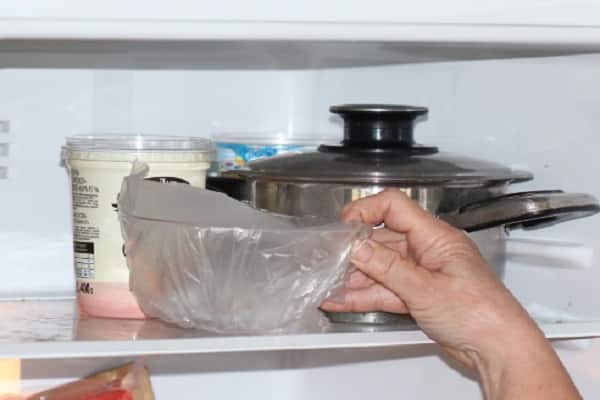

Conclusions on growing bagged vegetables


Thus, growing vegetables in bags is a great way to save space at a summer cottage, as well as an ideal way out for those who do not have a vegetable garden, but want to feast on fresh and healthy cucumbers. To get cucumbers in bags, cultivation and care must be carried out taking into account a number of rules. In principle, there is nothing complicated in this method of cultivation. In addition, this process is not only simple and useful, but also very exciting. Also read the article: Cucumbers in a barrel: growing and basic requirements for capacity for planting a crop.
What is the success of this planting method?
Growing a vegetable garden in plastic bags, strange at first glance, actually successfully replaces the use of seedling containers or large containers for home planting of crops. With minimal costs for materials and equipment for plant cultivation, you can provide them with uniform heating of the root system and faster growth of the aboveground part, which guarantees earlier fruiting and abundant harvest. Simply put, filling the bags with the prepared nutritious soil mixture, you get small beds in any place convenient for this, besides, caring for them will be much easier than in the same ordinary greenhouse.
Did you know? The longest cucumber to enter the Guinness Book of Records grew in the garden of British farmer Alpha Cobb in 2008. Its length was 91.7 cm, and this despite the fact that the previous similar record of the same gardener was 89.2 cm.
The essence of the method, pros and cons
Bags for growing cucumbers take the most durable plastic bags, for example, for construction waste or from sugar and flour. They are filled not only with soil mixture, plant residues, compost, manure, and droppings are placed on the bottom. The result is a miniature warm bed.
Pros of growing bagged cucumbers:
- The method is good for regions with cool summers without strong winds. The roots of cucumbers are located above ground level, on a warm pillow, warm well.
- Leaves do not lie on cold, damp ground. The bases of the bushes are well ventilated and illuminated, which means that there will be less diseases.
- Space is freed up for other beds, because the bags can be placed anywhere, not necessarily on fertile soil.
- This is a chance to get an early harvest, since the bags can be transferred, for example, to start growing in a greenhouse, on a veranda, on a balcony, and move them to the site with the arrival of heat.
- Easier to care for. Weeds practically do not grow in bags, it is not necessary, as in traditional cultivation, to bend to the ground in order to feed, water, loosen.
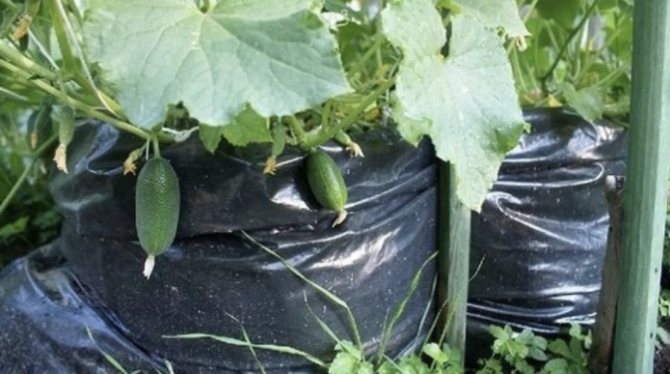

Cucumber bag as a mobile and miniature warm bed
Cons of growing in bags:
- The method cannot be used in regions where there are heat and dry winds in the summer. The bagged soil, and then the cucumbers, will dry out in a matter of hours.
- In any region, constant monitoring of soil moisture is required. The method is not suitable for gardeners who visit the site once a week.
- Polyethylene becomes brittle from temperature extremes and ultraviolet radiation. The bags can creep apart without even lasting one season.
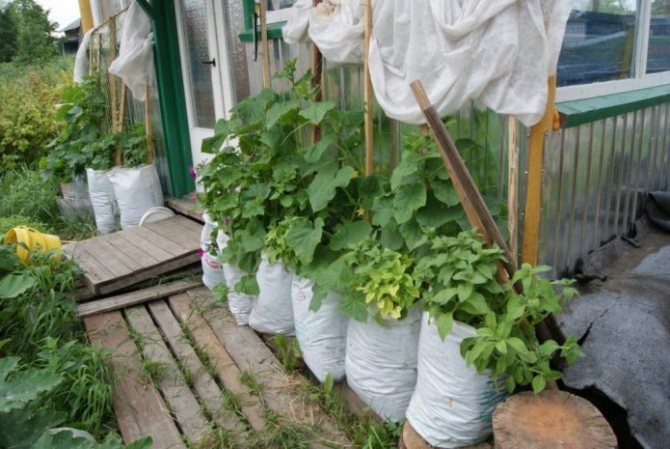

Polyethylene bags can overheat in the sun and tear, so the method is well suited only for non-hot regions
Further care for an adult plant
It is necessary to grow cucumbers in order to get a good harvest correctly, adhering to all recommendations for the care of the crop.
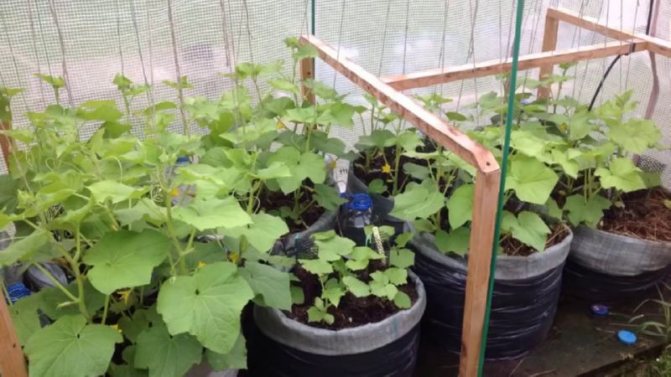

Bush formation
The liana of culture must be properly formed. The central lash is tied to a pole, the lateral shoots are removed in a timely manner before they are very elongated. The bush is formed so that the main stem goes up.
Watering and feeding
Watering must be carried out with warm water using tubes inserted into the container at the stage of formation of the "bed". This method is considered optimal, since the soil will be sufficiently moistened, and the leaves will not be wet. Watering is carried out 2-3 times a week in moderately hot weather.
See also Cucumber courage f1: description, planting and growing in a greenhouse and open field
Garter
When more than five leaves appear on the bush, it is tied to a rope extending from a pole, which is pre-installed in the bag. Each plant must have its own thread.
Bag preparation and backfilling
Bags should be not only strong, but also clean, it is better to take new ones, turn the used ones inside out, rinse and dry in the sun. Then follow the rules:
- The bag will fill up to about half the height. Wrap the edges to this level with a roller, which will serve as a side of the future mini-garden.
- Pour any of the available materials on the bottom: manure or chicken droppings, weeds, straw, sawdust, kitchen waste, last year's leaves, thin twigs, that is, everything that you usually send to compost. The thickness of such a layer is a quarter of the height of the entire bag (20–30 cm).
- Tamp and pour the resulting "pillow". You can use hot water, regular from a barrel or a solution with compost accelerator, Fitosporin, Shine, etc.
- Pour 3-4 buckets of soil mixture on top, consisting of ordinary soil from the site and humus - 2: 1 or 1: 1, depending on the fertility of the soil on your site. Add 1-2 cups of wood ash. Another option is to buy a ready-made universal primer. The soil mixture layer above the "pillow" should be at least 20 cm.
- In the lower part of the bag, from the ends, and not in the bottom, make several punctures with a knife. Without them, rain and irrigation water will stagnate in the bag, the roots will begin to rot, and the plants will turn yellow and die.
- It is better to put the bag in a recess, if you grow on a balcony or on a terrace, then substitute a basin to drain the water.
Other ways of bagging:
- Horizontal bed:
- The bag is filled with earth to the top.
- A second bag is pulled onto it from the side of the neck and fixed.
- Holes are cut at the end for planting cucumbers.
- The bags are placed on the ground or suspended. In the latter case, the cucumber lashes hang down.
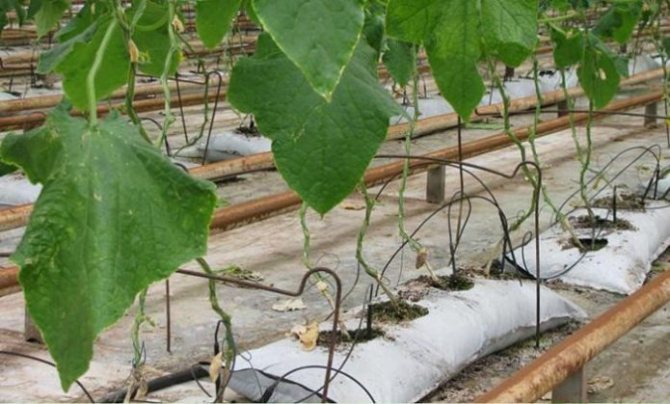

The bags are arranged horizontally, each with three cucumbers planted
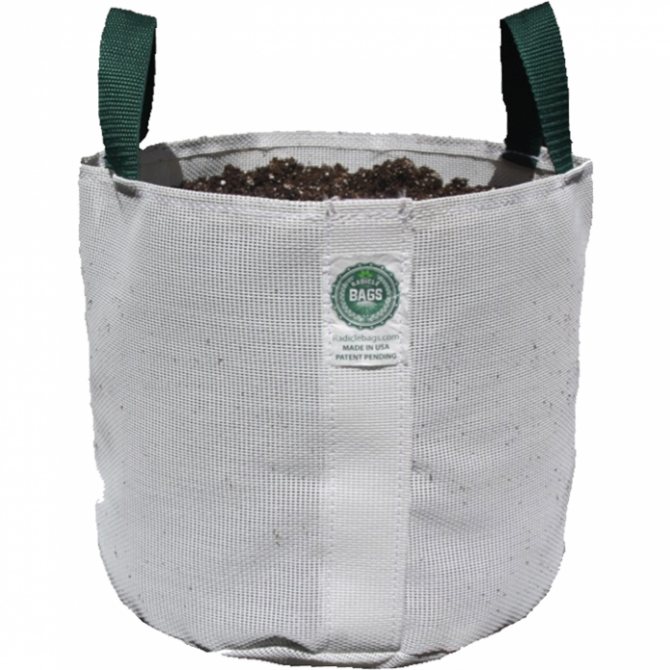

On the Internet, you can buy special bags for growing any plants
By the way, the method of growing in bags has long been known abroad.
You can type grow bag in Google and there will be a bunch of pictures of how garden crops are grown in various bag-bag-bags. A lot of ideas, not counting the fact that abroad in almost all online gardening stores you can buy both these bags and decorative fences for them to make it beautiful.
NatalijaG
Prepare bags for planting
Let's analyze the preparation process step by step:
| Purchase packages Strong container required... The weight of the earth in the bag is often 50 kg, so the loads are quite large. The sizes should be selected that will fit in the place reserved for cucumbers. Bags need to be prepared... For this, several holes are made at the bottom for drainage and air exchange. They should not be large, otherwise the material will simply burst under load. |
| Prepare the ingredients for the nutritional formula Purchase ready-made peat soil or collect peat, if possible... You need a lot of this component - about half of the total. You also need soil from the garden.... It is picked up from a place where cucumbers have not grown for a long time, ideally, in the fall, plant siderates on it and dig it up before winter. Humus or rotted compost... You can add separately, or you can immediately enter into the composition of the garden soil, Humus needs about a third of the volume of the garden soil |
| Select materials for drainage and soil enrichment It is best to put straw or sawdust on the bottom.... The sawdust should not be fresh, since fresh options take nitrogen from the soil, which is highly undesirable. Wood ash... You need about a liter per bag. Perfectly saturates the soil with the necessary microelements |
| Buy complex fertilizer Several options can be collected: potash fertilizers, superphosphate, etc. But it is difficult - to dose, interfere, you can make a mistake and cause harm instead of benefit. It is much more convenient to use a complex preparation. I use Zdraven, it has all the trace elements necessary for cucumbers and is easy to use |
| Fill in the package At the bottom, put a layer of sawdust or straw 20 cm thick... Dried grass cuttings can also be used. Next, a mixture of peat soil and garden soil with humus is poured in equal proportions... Ash and complex fertilizer are poured into the composition before filling |
Sowing with seeds and planting seedlings
Start sowing and planting at the same time as for normal cultivation. Cucumbers love warmth, at night the temperature should be above +15 ° C, in the daytime around + 20 ... +25 ° C. With prolonged cooling down to + 5 ... +7 ° C, cucumbers die. This means that cucumbers are planted in open ground when the required temperature regime is established, in a greenhouse - 2-3 weeks earlier. Provide an opportunity to insulate the planting in case of return frost arrival, for example, wrap it up with covering material.
Cook the seeds as for any other method, you can germinate, soak in stimulants, sow dry. The planting depth is 2 cm. 1-4 cucumbers can grow in one standard sugar bag. Their number depends on the variety: vigorous ones with thick stems, large leaves, many lateral shoots are planted in 1-2, low-growing - 3-4. The scheme for seedlings is the same. The optimal age for its transplant is 30–35 days. Transplant cucumbers with a lump of earth so as not to damage the roots.
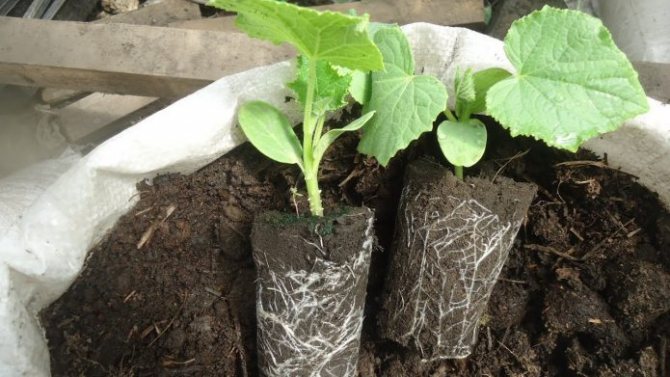

Transplant cucumbers with a clod of earth so as not to damage the roots
Planting cucumbers
There are two ways to grow cucumbers in plastic or wicker bags: by seeds and seedlings. If it is decided to plant cucumber seeds in large containers, it is better to sow them not only in holes on the surface, but also deep in the ground. To do this, about 10 cuts are made on the sides, at least 5 cm in length, and the seed is placed in the ground, and then the soil is lightly tamped. This method allows the seeds to germinate quickly, the first shoots will appear within a week.
When planting seedlings, it is important not to damage the young roots. In the soil, you need to make a depression the same size as a lump of earth from a seedling glass and lightly pour warm water, then gently take out an earthen lump and place it in the hole. The first 4 days, the seedlings are watered abundantly and shaded so that they do not burn in the sun. During this time, young plants have time to adapt to new conditions and begin to grow further.
Care features
Cucumbers in bags need to be watered often: in dry, windy, sunny weather - twice a day. If this is not possible, arrange drip irrigation. An alternative would be plastic bottles:
- At the stage of filling the bags with soil mixture, dig in 1-2 bottles (5 l) vertically. The necks should be above the ground, and make a few holes in the walls first.
- Fill bottles with water and cork.
- Add water periodically.
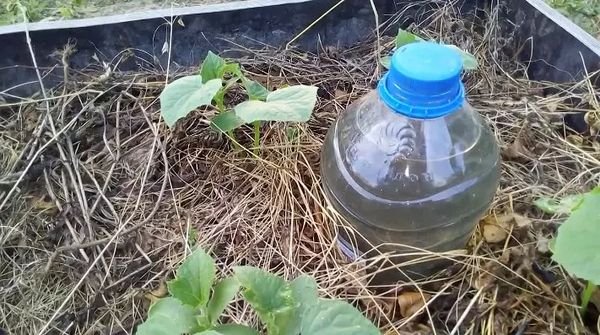

Bottle replaces drip irrigation
Another feature of bag cultivation is top dressing. If a pillow made of organic waste was laid on the bottom, then you cannot water it with infusions of mullein, dung and nettle. Cucumbers extract similar organics from the depths of the bag. At the beginning of fruiting, apply phosphorus-potassium fertilizer only once:
- 1 tbsp. l. Dissolve superphosphate in 1 liter of hot water;
- dilute to 10 liters and add 1 tbsp. l. potassium sulfate;
- use 2-3 liters per bag.
If you planted it in the soil without a layer of organic matter, then the top dressing should also contain nitrogen. Buy a special fertilizer for cucumbers and follow the instructions. For example, a solution of BioMaster liquid concentrate (1.5 caps per 10 liters) is watered every 7-10 days. To protect cucumbers in a stressful situation (cold snap, heat, transplant, change of location), spray with Epin, Energen, Novosil, etc. During flowering, use boric acid (2 g of powder per 10 l of water) or Ovary and Bud preparations.
Video: tips for growing bagged cucumbers
The shape depends on the specific cucumber. If this is a variety, then the plants are pinched over 5 leaves and side lashes are grown in the spread. Hybrids lead to one stem with a mandatory vertical garter.Lateral shoots are pinched over 2-3 leaves.
You will not have to tie up at all if the bags are near the fence or near the net stretched between the posts. You can stick a stake with a nail driven in at the top into the center of each bag. Garter ropes are attached to the nail.
Collect zelentsy regularly, preventing them from overripe. Then the bush will direct all the juices to the setting and development of new cucumbers.
Bush formation
A good harvest is impossible without the formation of the correct shape of the bush. Cucumbers give many lateral lashes, and if all of them are allowed to grow, then active fruiting can not be expected - the plant will deplete its strength and give up all its nutrient reserves for the growth of shoots.
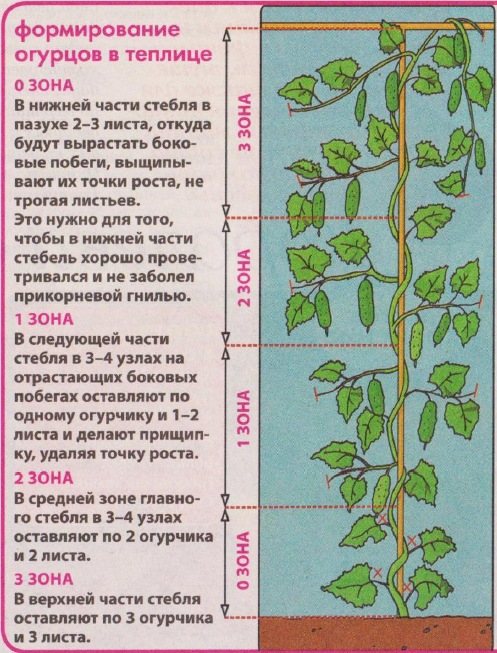

Formation of cucumbers by zones
When grown in a bag, cucumbers are formed so that the main stem rises up along a twine tied to a pole, and the lateral processes go down. Three to five leaves and internodes are left on them, in which fruits are formed. All shoots of the third order are removed.
The formation of bushes is carried out regularly, preventing the growth of long lashes - when they break off, the plant inhibits growth. It is better to pinch the young tops of the shoots in time.
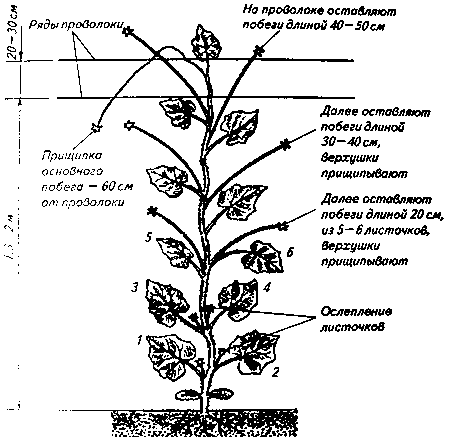

We form cucumbers
Reviews about growing in bags
I will plant Dolomite F1 on the early ones. This year the experiment was unsuccessful, they froze in my bags. The frost was strong, one night -9. And on top, I did not cover them, and the tomatoes are nearby, but the covered ones survived. Yes, it was all in the greenhouse.
Busyasha
A slot is made in the bag for the sprout. The composition of the soil mixture will be selected experimentally. Last year I used ready-made, purchased, peat. But it was an unsuccessful composition: it turns sour and dries quickly at the same time. And you need a neutral soil and so that it retains moisture for irrigation once a day. Top dressing during the growing season, naturally liquid, balanced in phosphorus and potassium, with a minimum of nitrogen. But here we must also look for the optimum, because this method is very different from growing on the ground.
DANS
These methods (both in a bag and in a tire) are good in that you can put such a "flower bed" where the beds cannot be made (I had them under the fence and near the house) and this significantly saves space.
Elena 79
It is reasonable to grow cucumbers in bags only in temperate climates and in the case when there really is not enough space on the site. Plants in a limited amount of land require more attention, they need special care.
Disinfect seeds
How to plant cucumbers in bags:
| Prepare and sow seeds Be sure to disinfect the planting material... The exposure to potassium permanganate ensures the destruction of viruses and makes the seeds much more resistant to adverse conditions. Seeds are sown in separate cups... Before planting, fill them with a fertile mixture and pour warm water |
| Grow seedlings correctly After sprouting, put the plants on the window... Provide lighting for at least 10 hours a day. Provide timely watering and feeding... It is advisable to spray the ground part with water in the morning and evening. |
| Transfer into bags is carried out when the soil warms up The soil should have a temperature of about 20 degrees... In one standard 50 kg bag, 2 plants are usually planted. Seedlings are carefully removed from the containers... Holes are made and cucumbers are planted |
| Water the plants. After planting, water the seedlings abundantly... Moisture should saturate the root. Mulch the surface with peat |
Growing cucumbers in bags: advantages and disadvantages
The summer resident's cherished dream is to place all vegetable crops and even a flower garden on 6 hectares in order to plant trees as well. The desire to economically use the area of the site leads to experiments such as growing cucumbers in bags. This technology has been repeatedly tested by gardeners, and they all note a long fruiting period and excellent yields.
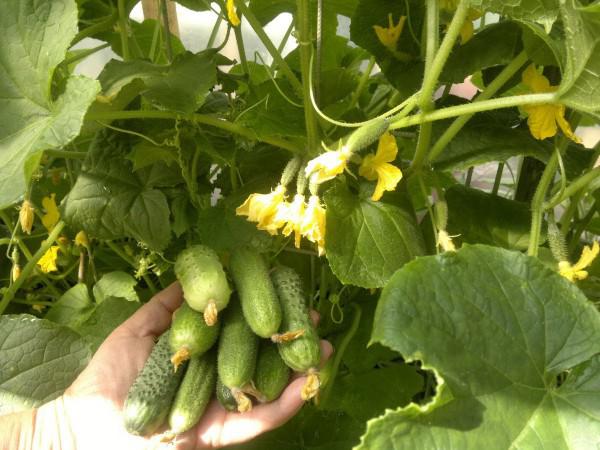

Testimonials
- Andrey, 32 years old, Svetlogorsk: “A great way to grow. I have a small plot - 8 acres, and even with fruit trees. You won't turn around. And like this, in a bag I plant cucumbers and potatoes. "
- Alexander, 45 years old, Kazan: “Cucumbers are planted in agrotextile bags. But, however, then drip irrigation is needed for them. There are 8 plants per bag. There is enough harvest both to “eat fresh cucumbers” and to close the banks ”.
- Victor, 38 years old, Moscow: “I plant cucumbers in bags at the beginning of May: polyethylene perfectly protects from frost. Cucumbers bear fruit until mid-September. I have been doing this for over 10 years - the result is always excellent. The bag lasts about 5 years. "
- Evgeniy, 42 years old, Khakassia: “I have been planting cucumbers in bags for 3 years. They grow as usual, but they need to be watered less often, because moisture lasts longer in polyethylene. Another big plus is that the bear does not bother cucumbers. In the bag, the seeds hatch faster, and then the sprouts develop faster. "
Growing cucumbers in bags is a very simple and affordable way to get an excellent harvest. Caring for plants is practically no different from caring for vegetables grown on the ground, but the vertical bed takes up less space, and the film protects from pests. The best varieties for a greenhouse, reviews and other data are indicated in the article.
Advantages and disadvantages
This new method of growing cucumbers has several advantages, especially for those with a small plot of land:
- Having saved space for this vegetable, we will not lose in the harvest, but only win.
- In addition, caring for such a crop is simple and convenient, they do not require weeding, and pests cannot get into the beds packed in protective material.
- Plants are more often ventilated, so the risk of developing diseases is reduced.
- Cucumbers with this growing method are always clean and bear fruit for a long time.
- Those who do not have a land plot, and some types of vegetables grow in boxes on a balcony or loggia, this method of planting cucumbers will be in full effect. If you follow all the rules for watering and feeding, cucumbers will delight you with their juiciness, crunch and harvest.
The only drawback of such a planting is that the cucumbers planted in the side slots need constant watering, since the sides of the bags heat up more and the soil in them dries out. Therefore, for planting, it is better to take dense white bags. The advantages of the method of growing cucumbers in bags are many, and there are almost no drawbacks, so summer residents are happy to use it on their plots.
The essence of this method
This method of cultivating cucumbers involves using a plastic bag instead of a garden bed, while it can be placed anywhere (even on the balcony).
The advantages of the method:
- maintains soil moisture levels even in hot and dry seasons;
- makes it possible to quickly warm up the soil layer to the required depth and maintain the desired temperature in it - this is how thermophilic cucumbers will develop actively and fully;
- allows you to rearrange plants in a suitable place (for example, in a shady, with a sufficient amount of diffused light);
- significantly saves space: they plant 10-15 cucumber sprouts per m², which creates conditions for growing more vegetables in a limited area;
- from a small piece of land in burlap, you can collect a rich harvest, which will be no less than in an open garden;
- a minimum of effort is required when caring for plantings: no need to dig up the soil, remove debris and plant residues;
- simplifies the process of harvesting the grown crop;
- prevents close contact of fruits with the ground and ensures their purity;
- the root system is not attacked by parasites, and it rarely gets sick.
Planting cucumbers in bags of soil
Finished seeds are planted in no more than 3-4 parts, and the rest are planted in the cut holes on the sides. The side cuts in the bags should be evenly spaced apart.No more than 15 cucumber seeds are sown in each bag. To better retain heat and moisture, the top bags are covered with a film or other covering material.
It will be convenient for a plant in such a garden when the bags are placed along the trellis, because the cucumbers cling to the trellis as they grow and crawl upward. If the grate is low, then the whips can simply be thrown onto it. With a trellis more than one meter high, the cucumber stalks are simply tied with twine.
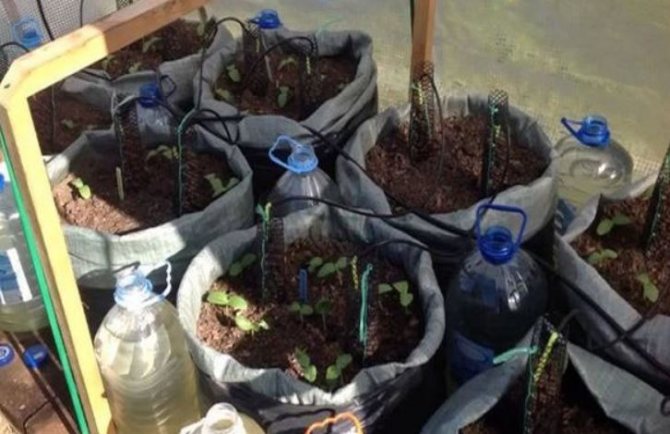

Some truck farmers do not lay the bags, but lay them on their side, make cross-cuts, sowing the seeds in furrows. It all depends on the characteristics of the site, on the practical skills of the summer resident. Understand a cucumber in the first half of May when the air temperature is above 15 degrees, so that in a month and a half you can eat them. If you want an abundant cucumber bed all summer long, it is best to sow both early and late maturing varieties.
Irrigation of cucumber seedlings:
- Cucumbers love water, so there should be a lot of watering.
- Only at the beginning of flowering of vegetables, watering is reduced for better fruit set.
- After the plants have faded slightly, watering begins in abundance.
- The best time for this is evening.
- Cucumbers also love spraying: the dust on the leaves becomes less, the air around is humidified.
- In hollow pipes, irrigation water flows through a hose or watering can.
- If such irrigation seems inconvenient and laborious, then it can be carried out with water from a bucket. Before that, the water must
- be warmed up and populated. Since moisture is stored for a long time in bags, it is necessary to check the moisture content of the earth in them daily.
- Excessive watering of the plant is also impossible, otherwise it will die.
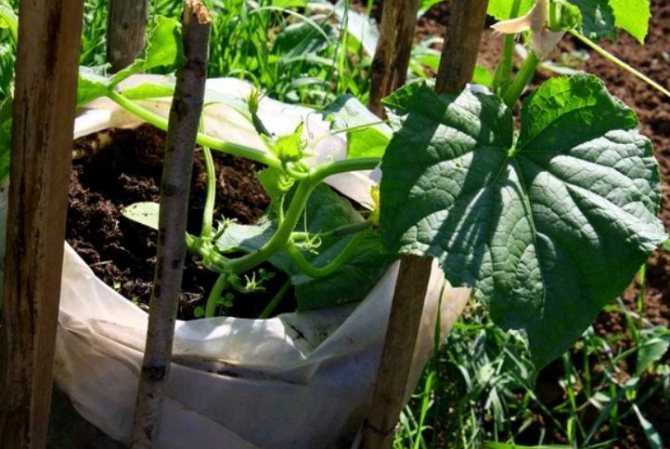

You can also feed the plant through these pipes:
- As soon as the first shoots of the plant appear, a weak solution of chicken manure should be introduced into the ground.
- Cucumber dressing usually consists of a combination of cow's milk with mineral fertilizers: superphosphate, ammonium nitrate, potassium salt.
- Do not forget to feed your cucumbers about the correct dosage of fertilizer: excess can lead to the fact that the soil becomes acidic or salt marshes.
- Some feeder farmers are fed an infusion of herbs, using whatever grows on the site, but prefer nettles as they are especially beneficial. Just pour the cooked herb with water and leave for a week.
- Fertilize the cucumbers after watering 2-3 times during the summer. On hot days at noon, cucumbers are painted with branches or shingles. This contributes to a better harvest. Caring for vegetables growing in bags is simple, does not require a lot of time and effort.
Step-by-step instruction
This method of planting cucumbers requires some effort during preparation, but it makes it easy to care for plants.
Seed preparation
Depending on your region, decide how you will plant the seeds - directly into the ground or through seedlings. The first option is suitable if the temperature does not drop below 15 ° C, that is, for the southern regions of Russia or indoor cultivation. In other cases, it is necessary to plant seedlings in bags.
Before planting, the seeds must be prepared (they begin to do this already in April). To begin with, we warm them up: we place them in a cloth bag and hang them in a warm place (preferably above the battery) for several weeks. There is another way of warming the seeds that increases the number of fertile flowers. Pour 60-65 ° C water into a thermos, place seeds in it and leave to warm for 36-48 hours.
After warming up, the seeds must be calibrated. To do this, dissolve a large amount of table salt in warm water, where we place the seeds. For planting, we select only those that have sunk to the bottom. We delete the pop-ups.
We wash the selected material and soak it in warm water for a day. After that, for a day, wet seeds in a napkin or cloth are placed in the refrigerator. The seeds are now ready to plant. Additionally, you can treat them with growth stimulants. Some gardeners advise pickling the seeds before planting.
For seedlings, we take peat or plastic cups, pour soil into 1/3 of the cup and plant one seed in each. As the plant grows, fill up the soil. We plant the shoots in bags after the appearance of the third leaf.
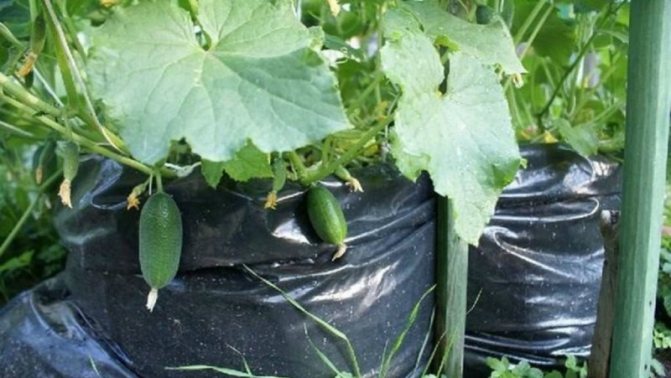

Site preparation
First, we will find a place to place the bags. On the street, we choose a shaded place and dig out small indentations for stability. On the balcony or loggia, we also free up a place protected from direct sunlight.
If you chose plastic bags for planting, for strength, use two bags at once, inserting one into the other. We make small holes in the bottom of the bag to ventilate the air and remove excess moisture. We cover the bottom with a layer of straw or sawdust.
Prepare the soil: mix 2 buckets of earth with a bucket of humus, two handfuls of wood ash, 20 g of superphosphate and 10 g of potash fertilizers. We fill the resulting soil into the bag to the middle. In the center we drive in a wooden support stick, and from it we take away the ropes or a net, to which our cucumber will cling in the future.
At a short distance from the stick, in a circle, we place three hollow tubes with holes in the ground. They will be needed when watering and feeding plants. After that, pour some more soil into the bag and wrap the edges of the bag, forming a side. We moisten the soil abundantly. Now you can plant cucumbers in the ground.
Landing
Sowing seeds or seedlings in bags should be done when the air temperature stops dropping below 15 ° С... We plant 2-3 sprouts in each bag. If you want to increase the number of plants in each bag, you can make triangular holes in the sides of the bag and plant seeds or sprouts in them.
Important! Do not plant more than 15 cucumbers in one bag.
We plant cucumbers to a depth of 3-4 cm. When planting seeds, cover the bag with polyethylene or other covering material until the first shoots. If you are planting seedlings in bags, moisten the soil well in a glass and carefully remove the sprout along with the clod of earth. Place the plant in the soil in the bag directly with this ball.
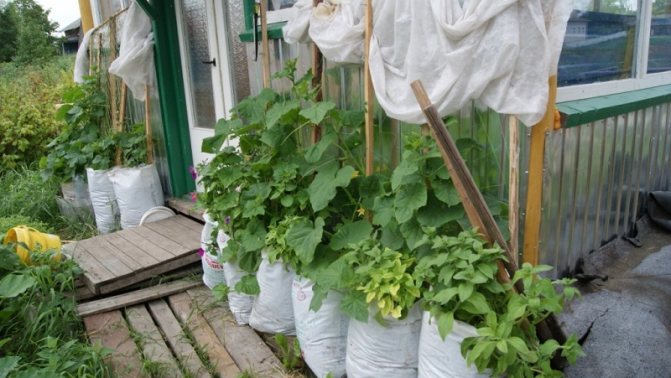

Care rules
Cucumbers love water, so you need to water them abundantly, and do not forget to spray. Watering is slightly reduced during flowering to form ovaries. As soon as the plant begins to bear fruit, it should be watered abundantly every day. In bags, the soil stays wet longer, watch this so as not to overmoisten it.
It is best to use hollow tubes with holes for irrigation, into which water comes from a hose or watering can. But especially lazy ones can simply water the plants from a bucket or watering can outside, without using straws.
In addition to watering, plants require timely feeding. Top dressing can be done through the same hollow tubes for even distribution over the entire soil. Cucumbers are fed with both organic (chicken droppings, herbaceous infusion) and chemical fertilizers (superphosphate, potassium, nitrophoska).
The plants are fed 2-3 times a summer after watering. Cucumbers planted in this way practically do not need weeding, but if grass or weeds still sprout in the soil, it is better to remove them.
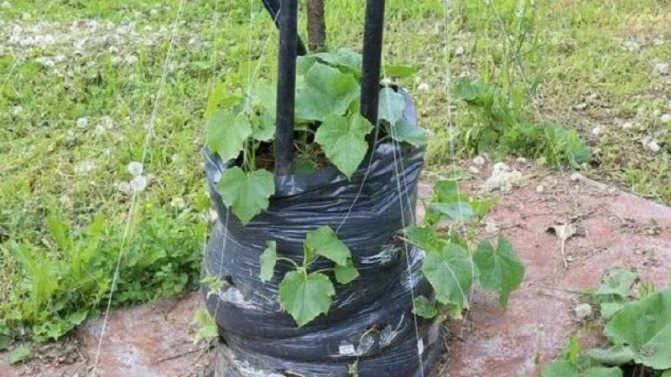

Possible problems and diseases
When growing cucumbers in bags, gardeners face a number of problems. First, it is uniform watering. Since moisture stays in the bag longer, it is important not to ruin the plant with excessive watering. At the same time, it is dangerous to dry the plant without giving it enough water.
Secondly, direct sunlight is dangerous for cucumbers. If you do not want to burn your plant, provide it with a shaded area with diffused sunlight.
Third, you don't need to plant too many plants in one bag. They simply do not have enough nutrients and moisture, they will grow weak and infertile.
This method of cultivation saves cucumbers from many diseases, protects them from hypothermia and waterlogging of the soil.
But still, although less likely, the plant can get sick with powdery mildew, downy mildew, brown spot, white, gray and root rot. To combat these diseases, gardeners use various fungicides (Novosil, Topaz, Privent, etc.).
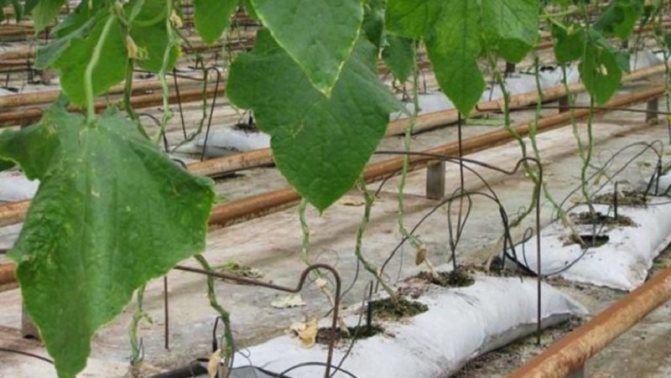

EACH VEGETABLE ITS OWN CONTAINER
- the depth of the container for carrots should be from 17 to 23 cm, the distance between the plants is 3-5 cm;
- the depth of the container for the cucumber is at least 25 cm, the distance between the plants is 30 cm;
- the minimum container depth with a volume of at least 15 liters for eggplant is 16 cm, it is advisable to grow one plant in one container;
- for growing onions on a feather, containers with a depth of 15 cm or more are suitable, while the bulbs can be planted tightly to each other, and, if desired, in several tiers;
- the volume of the container for pepper should be at least 8 liters, the depth - from 16 cm, it is better to plant one plant;
- the depth of the tomato container is at least 20 cm, also plant one at a time.
Subtleties of care
Cucumbers require the following care:
- Maintaining constant soil moisture.
- Application of organic and mineral fertilizers.
- The formation of lashes.
- Carrying out preventive measures against pests and diseases.
- Weeding weeds and attaching strings to supports.
- Harvesting ripe vegetables.
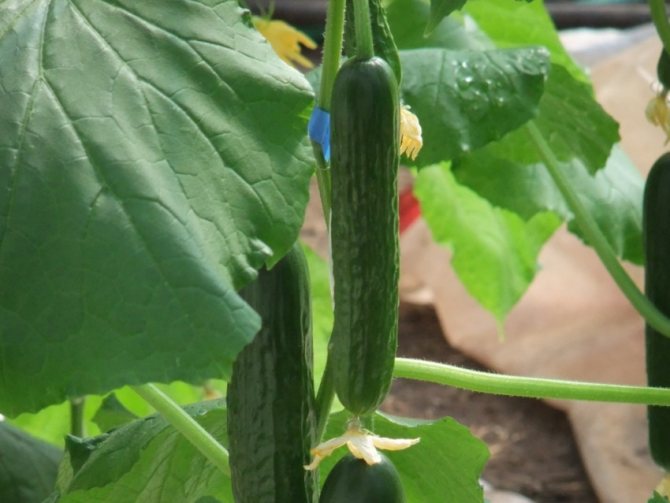

Remember that picking cucumbers must be carried out daily, otherwise they will overripe and their taste will deteriorate. In addition, harvesting in a timely manner will increase the duration of the plant's fruiting.
Follow the tips above and you will have a high yield of cucumbers.
